India’s Maha Kumbh Mela, also known as the Great Pitcher Festival, began on January 13, 2025, in Prayagraj, a city in India's northern state of Uttar Pradesh, with more than 400 million visitors expected over the six-week event.
The festival, considered the largest gathering of humanity in the world, is a monumental spiritual event for Hindus, attracting millions from across India and abroad.
What is the Maha Kumbh Mela?
The Kumbh Mela is a major pilgrimage and festival held every three years in four cities in India—Prayagraj, Haridwar, Nashik, and Ujjain—on the banks of sacred rivers.
The term "Maha Kumbh" refers to the festival that occurs once every 12 years in the cycle and is considered more auspicious, drawing the largest crowds.
Devout Hindus believe that bathing in the sacred rivers during the Kumbh Mela can absolve sins and bring salvation from the cycle of life and death.
For many, it is also an opportunity to receive blessings and spiritual renewal through the sacred dips in the holy rivers, particularly the confluence of the Ganga, Yamuna, and Saraswati at Prayagraj.
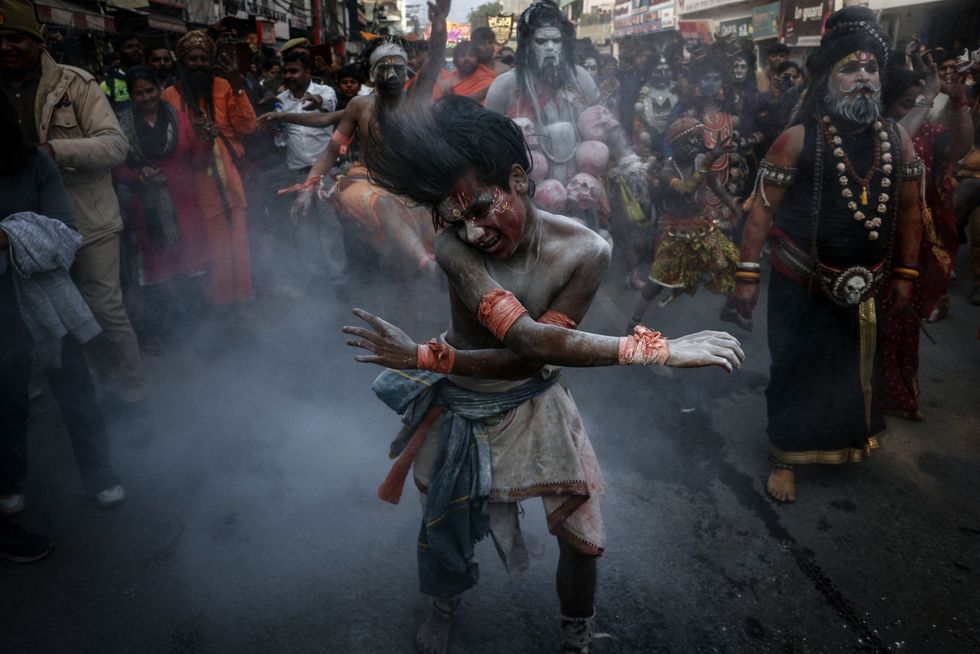
Origins of the Kumbh Mela
The origins of the Kumbh Mela date back to the Rigveda, one of the ancient Hindu texts.
The term "Kumbh" refers to a pitcher that contained the elixir of immortality, which emerged during the 'Sagar Manthan' or the churning of the cosmic ocean by the gods and demons.
According to Hindu mythology, during a celestial battle that lasted for 12 days, drops of the elixir fell at four locations—Prayagraj, Haridwar, Nashik, and Ujjain—which are now the sites for the Kumbh Mela.
At each location, devotees take part in the ritual of the 'Shahi Snaan' or royal bath, where they immerse themselves in the sacred river. These rituals are not only a means of purification but also an act of devotion and faith.
The scale of the event
In 2025, the Maha Kumbh Mela is expected to attract more than 400 million visitors, making it the largest gathering of humanity in the world.
The event spans six weeks and includes various ritual baths, processions, and spiritual activities, with millions of devotees arriving daily to partake in the holy dip.
Prayagraj, formerly known as Allahabad, has prepared extensively for the influx of pilgrims.
The authorities have set up a temporary city along the banks of the Ganga and Yamuna rivers, covering an area of approximately 4,000 hectares.
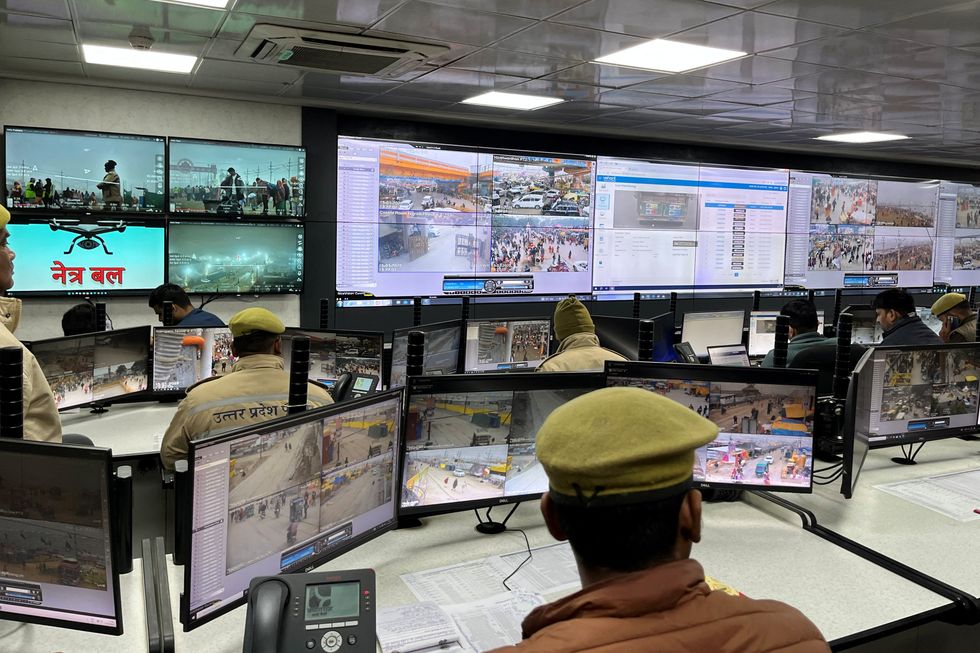
The city includes 150,000 tents to accommodate the pilgrims, along with thousands of toilets and sanitation facilities to ensure a clean and safe environment for the visitors.
The spiritual gathering at the Kumbh Mela is not just about rituals. The event also serves as a platform for various Hindu sects, or Akharas, to come together in grand processions.
These groups, which consist of ascetics and devotees, often display their spiritual disciplines through displays of devotion and mysticism.
In addition to religious practices, the Kumbh Mela also attracts individuals from all walks of life, from children to elderly people, and people with diverse professions and backgrounds.
The diversity of participants contributes to the rich and vibrant atmosphere of the festival.
Pilgrims and participants
The Kumbh Mela draws participants from all over India, including devotees, sadhus (ascetics), and individuals from different parts of society.
Among them are hermits and spiritual seekers, who leave their secluded lives for a brief period to join the event.
For many of these pilgrims, the Kumbh Mela is a once-in-a-lifetime opportunity to experience spiritual cleansing.
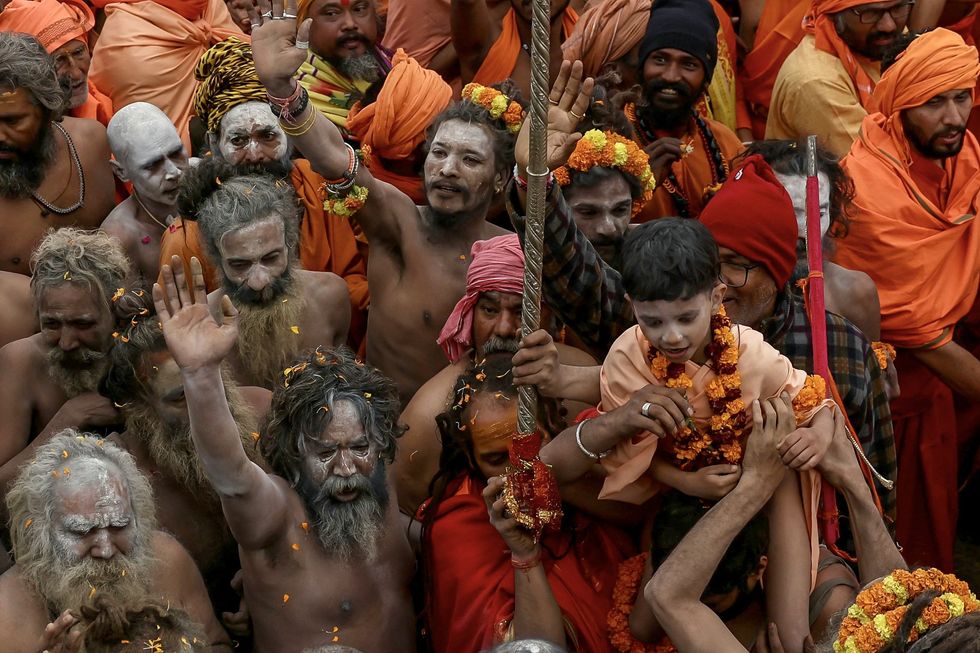
Notably, sadhus or Naga sadhus—ascetics known for their distinctive saffron robes and often ash-covered bodies—are among the key participants.
These ascetics perform ritualistic bathing during the festival and often camp in the tents set up along the riverbanks. Their participation adds to the unique character of the festival.
Beyond religious devotees, the Kumbh Mela also draws global attention, with celebrities and influential personalities attending to witness the grand spectacle.
Past visitors include actor Richard Gere, director David Lynch, and Tibetan Buddhist leader the Dalai Lama, further highlighting the global appeal of the event.
Logistics and organisation
The scale of the Maha Kumbh Mela poses significant logistical challenges, and authorities have made extensive arrangements to ensure the smooth running of the festival.
More than 50,000 personnel, including police, paramilitary forces, and security officers, are deployed to maintain law and order during the event.
Safety remains a priority, with various measures in place to manage the enormous crowds. The festival area is monitored using closed-circuit television (CCTV) cameras and drones.
Special anti-drone technology is also used to detect and eliminate unauthorised drones in the area.
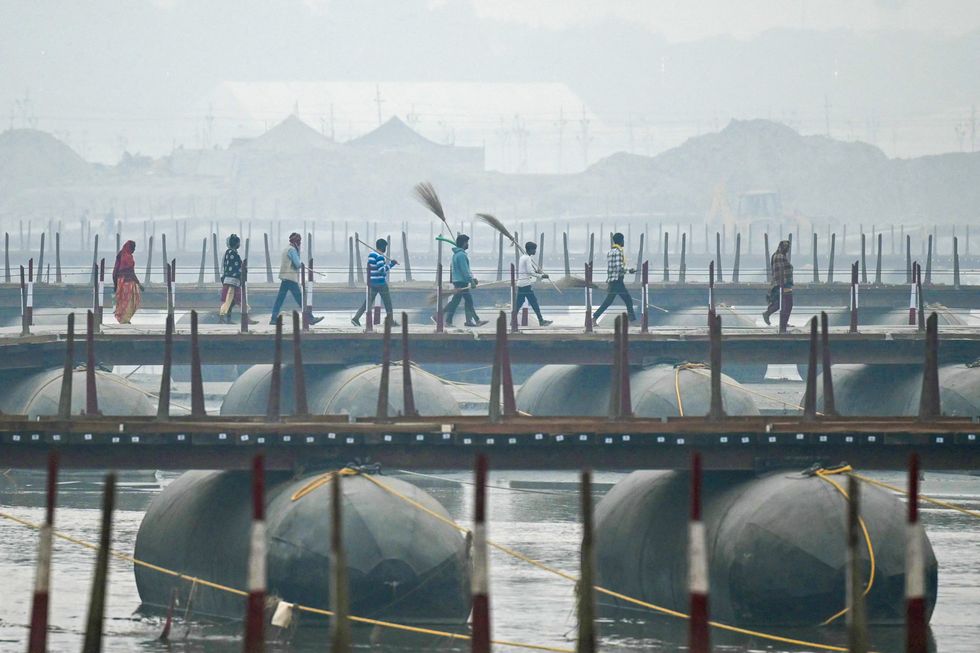
Additionally, underwater drones are employed to monitor the riverbanks, ensuring safety in case of any emergencies.
The authorities have also focused on fire safety, with more than £12.3 million allocated for fire safety measures.
Around 351 firefighting vehicles and 2,000 trained personnel are stationed in and around the festival site to respond to any potential fire hazards.
To assist pilgrims in case they become separated, lost-and-found centres have been set up throughout the area.
These centres are equipped with dedicated sections for women and children. Loudspeakers along the riverbanks also provide continuous announcements to help reunite families.
Infrastructure and amenities
To accommodate the massive influx of people, Prayagraj has been transformed into a temporary city designed to support millions of pilgrims.
The infrastructure includes over 150,000 tents, numerous sanitation facilities, and 69,000 LED and solar lights to ensure well-lit pathways.
With more than 15,000 sanitation workers assigned to maintain cleanliness, the authorities aim to ensure that the experience for pilgrims is as comfortable as possible.
Additionally, nearly 450,000 new electricity connections have been set up to meet the power needs of the festival.
The festival requires power supplies worth nearly £2.87 million, more than the monthly consumption of 100,000 urban apartments.
The event is also equipped with numerous community kitchens, each capable of feeding up to 50,000 people.
These kitchens cater to the needs of the pilgrims, ensuring they are well-fed throughout the duration of the festival.
Notable attendees
The Kumbh Mela draws a wide range of people, from young students to seasoned ascetics.
For example, 18-year-old Rishabh Kumar Singh, a student of artificial intelligence engineering, attended the festival after lying to his teacher about being unwell. Singh’s mother approved of his trip, and his father sponsored it, reported AFP. His primary aim was to meet the Naga sadhus and experience the festival’s atmosphere.
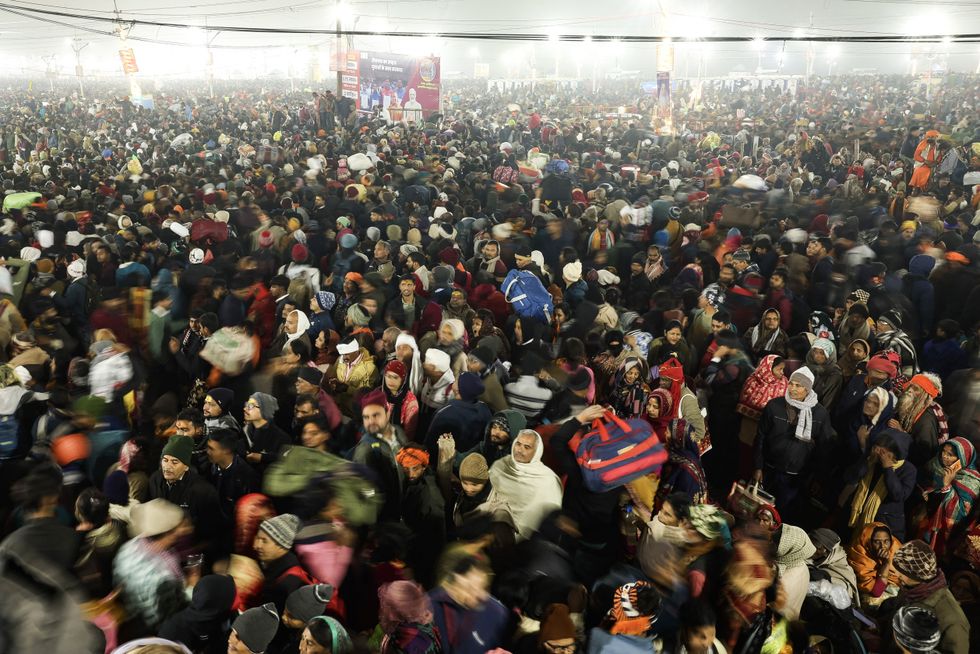
Other notable attendees include Jogiraj Giri Phalhari Tyagi Naga Baba, a 63-year-old monk who has lived alone in a cave for 40 years and follows a fruits-only diet. He has come to the Kumbh Mela to pay his respects and enjoy the festivities. Despite the challenges posed by his advanced age, he praises the festival’s organisational efforts.
Another participant, Shyamlal Shrivastava, a 40-year-old property agent from Madhya Pradesh, returned to the Kumbh Mela after losing his leg in a train accident. Despite the difficulties, Shrivastava is determined to bathe in the sacred waters once again, reported AFP.
The Kumbh Mela is also a gathering of ordinary people from different walks of life, including Meenakshi Gautam, a science teacher from Rajasthan, who described her trip to the festival as a dream come true.
Safety and preparedness
Security at the event is paramount, especially after the stampede in 2013 that resulted in the death of 36 people.
With the expected turnout of more than 400 million visitors, ensuring the safety and well-being of all attendees remains a key priority for the authorities.
The sprawling festival site, alongside the tight security measures and well-organised infrastructure, ensures that the event continues to be an important part of India's cultural and spiritual landscape.
The Maha Kumbh Mela, which will continue until February 26, 2025, will remain one of the most significant religious gatherings in the world.
(With inputs from agencies)
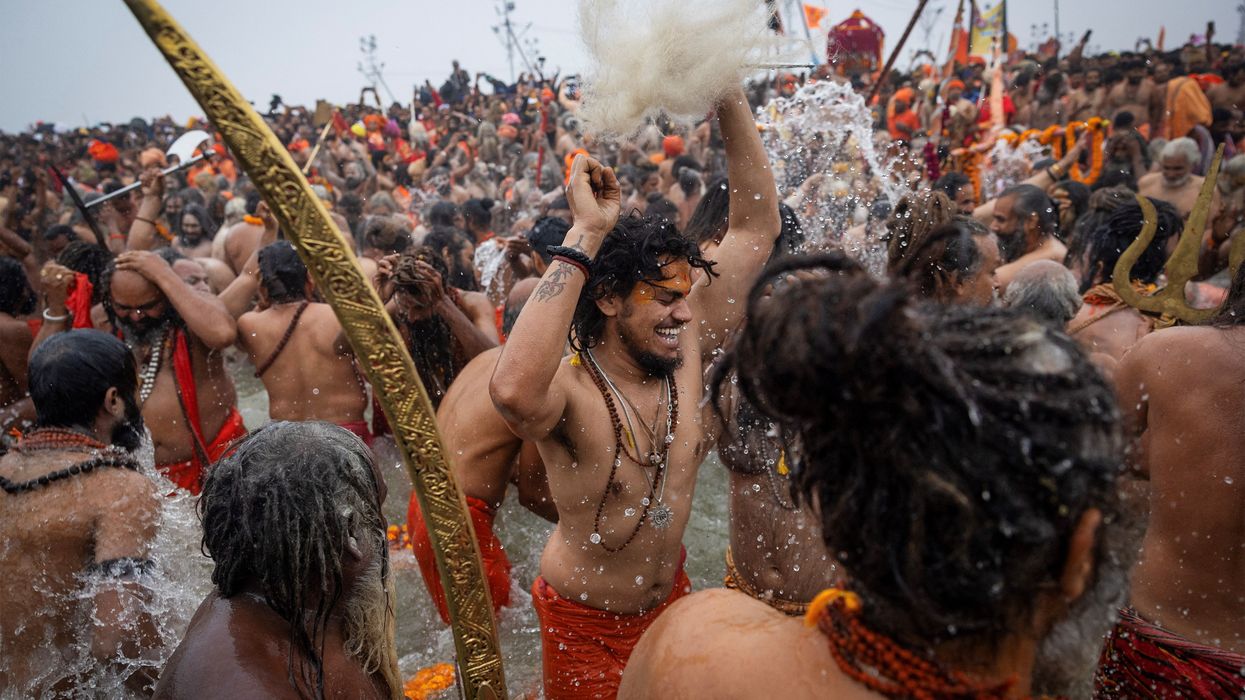






 Apsana Begum
Apsana Begum












